Browse our Growing Library of Success Stories
By:
Southwest Georgia Farm Credit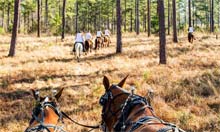 In today’s fast-paced society, it’s easy to wonder if the plantation economy is truly sustainable and whether or not the large landownership will remain. But transactions in recent years show a commitment that assures these legacy properties will remain as working rural lands and not as supersized residential developments.
In today’s fast-paced society, it’s easy to wonder if the plantation economy is truly sustainable and whether or not the large landownership will remain. But transactions in recent years show a commitment that assures these legacy properties will remain as working rural lands and not as supersized residential developments.
Read about the Red Hills Ecosystem »
By:
Mark Davis, USFWS Public Affairs Specialist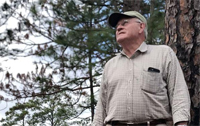 Georgia landowner Charley Tarver committed to helping the endangered red-cockaded woodpecker. Joe Burnam, a biologist with the Georgia Department of Natural Resources (DNR) credits Tarver, and the DNR’s Safe Harbor Agreement, with creating a healthy environment for the birds.
Georgia landowner Charley Tarver committed to helping the endangered red-cockaded woodpecker. Joe Burnam, a biologist with the Georgia Department of Natural Resources (DNR) credits Tarver, and the DNR’s Safe Harbor Agreement, with creating a healthy environment for the birds.
By:
Northwest Florida Water Management District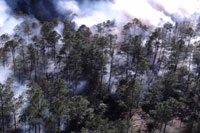 On March 2, 2018, a large prescribed burn occurred at the Yellow River Water Management Area in Santa Rosa County, Florida, which is managed by the Northwest Florida Water Management District. Weather and atmospheric conditions were ideal and resources were available for the Florida Forest Service to approve the burn permit. Aerial ignition via helicopter started the fire systematically across the landscape. Ground firing and monitoring crews, consisting of 15 personnel were stationed at the tract perimeter as ground support during the burn.
On March 2, 2018, a large prescribed burn occurred at the Yellow River Water Management Area in Santa Rosa County, Florida, which is managed by the Northwest Florida Water Management District. Weather and atmospheric conditions were ideal and resources were available for the Florida Forest Service to approve the burn permit. Aerial ignition via helicopter started the fire systematically across the landscape. Ground firing and monitoring crews, consisting of 15 personnel were stationed at the tract perimeter as ground support during the burn.
By:
Georgia Department of Natural Resources Tallulah Gorge State Park and the town of Tallulah Falls, Georgia are surrounded by a unique, fire-adapted forest community that, without low-intensity fire management, would gradually disappear. Restoration efforts are currently underway tore-establish this forest community with prescribed fire and mechanical treatments.
Tallulah Gorge State Park and the town of Tallulah Falls, Georgia are surrounded by a unique, fire-adapted forest community that, without low-intensity fire management, would gradually disappear. Restoration efforts are currently underway tore-establish this forest community with prescribed fire and mechanical treatments.
By:
U.S. Fish and Wildlife Service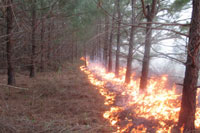 Enon-Sehoy Plantation, located in the Alabama Upper Coastal Plains, is a recreational, quail hunting property renowned for its open-story pine trees and diverse wildlife. The 27,500 acre, privately-owned property contains widely spaced longleaf, shortleaf, loblolly, and slash pine forests (basal area of 15-60 square feet per acre) with diverse understory grasses and forbs, such as bluestem, switchgrass, and the federally endangered American chaffseed. The forests and understory vegetation support abundant wildlife, including deer, turkey, and quail, as well as the threatened Bachman’s sparrow and the federally endangered red-cockaded woodpecker. Within four years, the property’s red-cockaded woodpecker population grew from just 3 clusters to 29 potential breeding groups.
Enon-Sehoy Plantation, located in the Alabama Upper Coastal Plains, is a recreational, quail hunting property renowned for its open-story pine trees and diverse wildlife. The 27,500 acre, privately-owned property contains widely spaced longleaf, shortleaf, loblolly, and slash pine forests (basal area of 15-60 square feet per acre) with diverse understory grasses and forbs, such as bluestem, switchgrass, and the federally endangered American chaffseed. The forests and understory vegetation support abundant wildlife, including deer, turkey, and quail, as well as the threatened Bachman’s sparrow and the federally endangered red-cockaded woodpecker. Within four years, the property’s red-cockaded woodpecker population grew from just 3 clusters to 29 potential breeding groups.
By:
Dan Chapman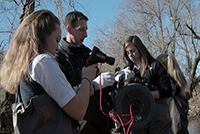 In Georgia, the effort to help a rare salamander is headed by hardworking school age kids
In Georgia, the effort to help a rare salamander is headed by hardworking school age kids